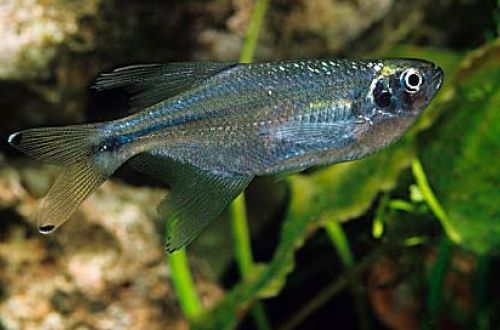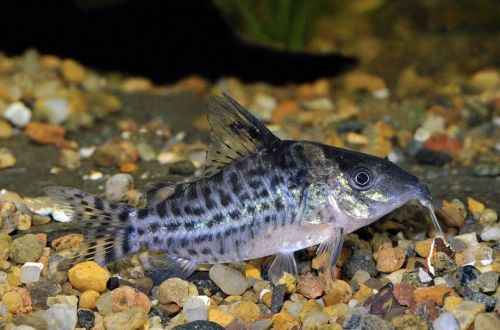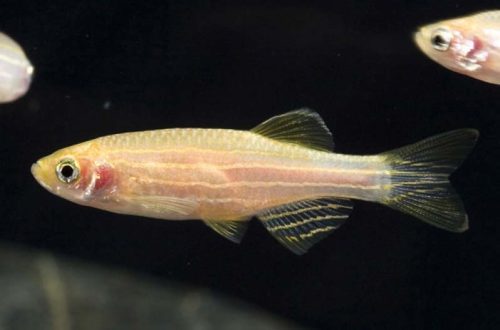
dragon tetra
The dragon tetra, scientific name Pseudocorynopoma doriae, belongs to the Characidae family. Outside of the Americas, it is rarely seen in hobby home aquaria due to its dull coloration. Behind the rather loud name lies a not too bright fish, the only distinguishing feature of which is the large anal and dorsal fins. When extended, they vaguely resemble wings.

It is worth noting that another Tetra is represented in the aquarium hobby, which has a similar name – Tetra-dragon, so some confusion is possible.
Habitat
The fish is native to South America. The main population inhabits the La Plata region in Uruguay – this is a huge estuary formed by the confluence of the Uruguay and Parana rivers, carrying their waters to the Atlantic Ocean. The water can be slightly brackish due to the proximity of the sea and variable turbidity.
Brief information:
- The volume of the aquarium – from 100 liters.
- Temperature – 20-24°C
- Value pH — 6.0–7.5
- Water hardness – soft to medium hard (1–16 dH)
- Substrate type – any
- Lighting – subdued or moderate
- Brackish water – no
- Water movement is weak
- The size of the fish is about 7 cm.
- Feeding – any food of suitable size
- Temperament – peaceful
- Keeping in a flock of 5-6 individuals
Maintenance and care, arrangement of the aquarium
The dragon tetra is an excellent swimmer and needs a lot of space to swim, prefers the top layer of water, so the length of the aquarium should be significantly greater than its height. For a flock of 5-6 fish, you will need a tank of 100 liters or more. Prone to jumping – the presence of a cover is required.
Arrangement is optional. Plants floating on the surface are not welcome, as they will interfere with swimming. Design elements on the lower tier are selected at the discretion of the aquarist.
Since mixing with sea water occurs in the La Plata region, especially during storms, the fish have acquired the ability to tolerate pH values above neutral values. Due to this, they do not impose high requirements on the hydrochemical composition of water.
Food
If the fish is grown in an artificial environment, and not caught in the wild, then it is likely that the breeders have already accustomed the breeders to popular dry and frozen foods. You can diversify the daily diet with live brine shrimp, bloodworms, large daphnia and other invertebrates.
Behavior and Compatibility
Active fast fish. Prefers to be in the community of relatives, for this reason it is recommended to acquire at least 5-6 individuals. There are no intraspecific conflicts. During the mating season, males can compete with each other for the attention of females, but it does not come to skirmishes. Males prefer to court with the help of dances, lowering their heads and circling near the females.
Compatible with most other types of comparable size. With caution, you should choose from among the slow fish, for which the overly mobile Dragon Tetra will become an unnecessary irritant.





